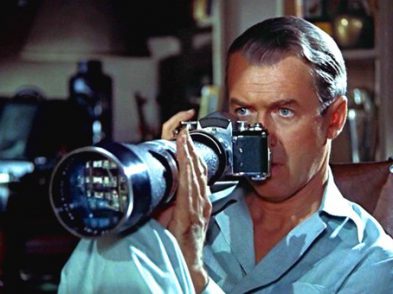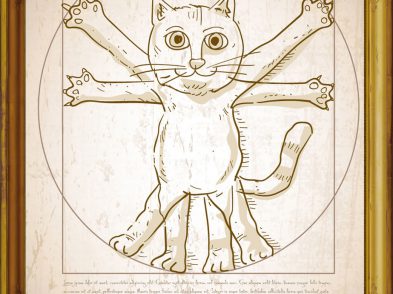In celebrating the anniversary of the birth of William Shakespeare the British Institute, Biblioteca Nazionale and Gabinetto Vieusseux are holding an exhibition devoted to Hamlet and to the figure of Edward Gordon Craig, a theatre designer who had a life-long discourse with the play. Some of his greatest work was developed while he was living in Florence.
‘That is what the title of artist means: one who perceives more than his fellows, and who records more than he has seen.’ Edward Gordon Craig (1872-1966)
Edward Gordon Craig, one of the most innovative stage designers of the twentieth century, spent ten years of his productive life in Florence. He was born into the theatre, the son of the great Shakespearean actress Ellen Terry and the architect Edward Godwin, remembered for his contributions to the English aesthetic movement.
Craig was born in 1872 and began his working life as an actor with touring companies and at Henry Irving’s Lyceum Theatre. He appeared as the lead in Hamlet in 1894 and again in 1896 when Irving, who had revived the play in 1874, lent him one of his own costumes and a dagger for the part. During the 1890s Craig became less interested in acting and more interested in theatre design and in the art of the woodcut: he produced marvellous books around this time, including Gordon Craig’s Book of Penny Toys, as well as his first productions, Purcell’s Dido and Aeneas for the Purcell Society in Hampstead and Ibsen’s The Vikings for his mother’s company at the Imperial Theatre in London. In these productions Craig began to apply his revolutionary theories of theatrical design, rejecting the realism and sentimentality of late Victorian productions. He emphasised light and movement, simplicity and unity of concept, ‘The art of the theatre’ he wrote, ‘is neither acting nor the play, it is not scene nor dance, but it consists of all the elements of which these things are composed.’
Financial support for his ideas was hard to find in England and Craig left for Germany in 1904. There he met the theatre director Max Reinhardt and the mother of modern dance Isadora Duncan, and he found support in patron of the arts Count Harry Kessler. He published Die Kunst des Theaters – On the Art of the Theatre. In this profoundly influential essay Craig proposed reclaiming the theatre from the dramatist; too many dramatists, he suggested, wrote for the ear and not the visual stage, theatre could function independently of literature.
Craig came to the notice of Eleonora Duse who invited him to Florence to design a production of Ibsen’s Rosmersholm. His first encounter with the city was on the stage of the Pergola one hundred years ago. On 5 December 1906 the curtain rose on what a contemporary described as, ‘a new architecture of great height, ranging in colour from green to blue. It was simple, mysterious, fascinating… it portrayed a state of mind.’
A few months later, Craig returned to Florence which became his home and work place for the next ten years. Here he worked with enormous energy in two spaces. The Arena Goldoni (the now closed Cinema Goldoni on via dei Serragli) was then an open-air theatre; in 1913 he founded his theatre school in this space. Adjacent to the Goldoni, now the home of the publishing house Polistampa, Craig took office space for his new periodical, The Mask. Begun in 1908, and with the assistance of Dorothy Nevile Lees, The Mask was devoted to theatre arts. Innovative and beautifully printed Craig sent the first issue all over the world and its arrival on the desk of the great Russian director Stanislavsky led to an invitation to Moscow.
The Moscow Hamlet was staged in 1912, all Craig’s preliminary work on his scenes having been carried out in Florence. Although Craig was not satisfied by the outcome, it was seen by others as a triumph. The critic for The Times wrote, ‘By the simplest of means Craig is able in some mysterious way to evoke almost any sensation of time or space, the scenes even in themselves suggesting variations of human emotion….the production is a remarkable triumph for Mr. Craig, and it is impossible to say how wide an effect such a completely realized success of his theories may have on the theatre of Europe.’ And Craig himself, ‘There are at least twenty different ways of producing Hamlet, all of which are fairly bad, for Hamlet cannot be produced on the stage…’.
Craig left Florence in 1915 but he was to return to Hamlet. Count Harry Kessler, as owner of the Cranach Press in Weimar, had suggested an edition of the play as early as 1912. His Hamlet, published in German in 1929 and English in 1930, is now recognised as among the most exquisite private press books of the twentieth century. Kessler did the typographical arrangement himself, Craig designed and cut on wood the illustrations, Eric Gill designed the title-page and Edward Johnston designed the type. Craig’s illustrations came from that same technique he had worked out while planning the Moscow Hamlet in Florence; simple figures in relief cut from thin wood veneer were used with ink for prints. A copy of this edition can be seen in the exhibition.
The exhibition opens at the Biblioteca Nazionale on May 3, 2006. During the same week the British Institute will be reading Hamlet (all readers welcome), showing film versions of the play and hosting other events. See www.britishinstitute.it for the full programme of events.




